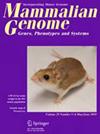根据肠道微生物群预测巴雷特食管的潜在恶化:孟德尔随机分析。
摘要
食管腺癌(EAC)是消化系统中恶性程度最高的肿瘤之一。更糟糕的是,治疗方案的匮乏令人沮丧。不过,如果及早发现,还是有可能逆转病情的。遗憾的是,目前仍缺乏相关的早期筛查方法。巴雷特食管(Barrett's esophagus,BE)是 EAC 的前驱病变,已被证实是 EAC 的唯一已知前驱病变。分析哪些 BE 病例会发展为 EAC,并了解其中的过程和机制,对于早期筛查这类患者具有重要意义。考虑到 BE 患者肠道微生物群的显著变化及其在 EAC 进展过程中的潜在作用,本研究旨在分析 BE、EAC 和 GM 之间的关系,以确定潜在的诊断生物标志物和治疗靶点。本研究利用了MiBioGen联盟进行的大规模全基因组关联荟萃分析(n = 18,340)中有关肠道微生物群的综合统计数据。随后,我们选择了一组低于全基因组显著性阈值(1 × 10-5)的单核苷酸多态性(SNPs)作为工具变量。为了研究肠道微生物群与 BE 和 EAC 之间的因果关系,我们采用了多种 MR 分析方法,包括反方差加权(IVW)、MR-Egger 回归、加权中位数(WM)和加权平均值。此外,我们还通过 MR-Egger 截距检验、MR-PRESSO、Cochran's Q 检验和 "leave-one-out "敏感性分析评估了遗传变异的多向性、异质性和稳定性水平。此外,我们还进行了反向 MR 分析,以确定肠道微生物群与 BE 和 EAC 之间的因果关系。反向方差加权(IVW)分析的结果表明,Alistipes(P = 4.86 × 10-2)、Lactobacillus(P = 2.11 × 10-2)、Prevotella 7(P = 4.28 × 10-2)和RuminococcaceaeUCG004(P = 4.34 × 10-2)是巴雷特食管(BE)的危险因素,而 Flavonifractor(P = 8.81 × 10-3)和 RuminococcaceaeUCG004(P = 4.99 × 10-2)是食管腺癌(EAC)的危险因素。另一方面,某些肠道微生物群属似乎对 BE 和 EAC 都有保护作用。其中包括BE队列中的Eubacterium(nodatum组)(P = 4.51 × 10-2)、Holdemania(P = 1.22 × 10-2)和Lactococcus(P = 3.39 × 10-2),以及EAC队列中的Eubacterium(hallii组)(P = 4.07 × 10-2)和Actinomyces(P = 3.62 × 10-3)。根据反向 MR 分析结果,未观察到 BE 和 EAC 对肠道微生物群有明显的因果效应。此外,在工具变量中也没有发现明显的异质性或多义性。我们确定了肠道微生物群与 BE 和 EAC 之间的因果关系。这项研究对于筛查可能面临病情恶化风险的 BE 患者具有深远意义,因为它可以为患者提供及时的医疗干预措施,以逆转病情。

Esophageal adenocarcinoma (EAC) is one of the most malignant tumors in the digestive system. To make thing worse, the scarcity of treatment options is disheartening. However, if detected early, there is a possibility of reversing the condition. Unfortunately, there is still a lack of relevant early screening methods. Considering that Barrett's esophagus (BE), a precursor lesion of EAC, has been confirmed as the only known precursor of EAC. Analyzing which BE cases will progress to EAC and understanding the processes and mechanisms involved is of great significance for early screening of such patients. Considering the significant alterations in the gut microbiota of patients with BE and its potential role in the progression to EAC, this study aims to analyze the relationship between BE, EAC, and GM to identify potential diagnostic biomarkers and therapeutic targets. This study utilized comprehensive statistical data on gut microbiota from a large-scale genome-wide association meta-analysis conducted by the MiBioGen consortium (n = 18,340). Subsequently, we selected a set of single nucleotide polymorphisms (SNPs) that fell below the genome-wide significance threshold (1 × 10-5) as instrumental variables. To investigate the causal relationship between gut microbiota and BE and EAC, we employed various MR analysis methods, including Inverse Variance Weighting (IVW), MR-Egger regression, weighted median (WM), and weighted mean. Additionally, we assessed the level of pleiotropy, heterogeneity, and stability of genetic variations through MR-Egger intercept test, MR-PRESSO, Cochran's Q test, and "leave-one-out" sensitivity analysis. Furthermore, we conducted reverse MR analysis to identify the causal relationships between gut microbiota and BE and EAC. The results from the Inverse Variance-Weighted (IVW) analysis indicate that Alistipes (P = 4.86 × 10-2), Lactobacillus (P = 2.11 × 10-2), Prevotella 7 (P = 4.28 × 10-2), and RuminococcaceaeUCG004 (P = 4.34 × 10-2) are risk factors for Barrett's esophagus (BE), while Flavonifractor (P = 8.81 × 10-3) and RuminococcaceaeUCG004 (P = 4.99 × 10-2) are risk factors for esophageal adenocarcinoma (EAC). On the other hand, certain gut microbiota genera appear to have a protective effect against both BE and EAC. These include Eubacterium (nodatum group) (P = 4.51 × 10-2), Holdemania (P = 1.22 × 10-2), and Lactococcus (P = 3.39 × 10-2) in the BE cohort, as well as Eubacterium (hallii group) (P = 4.07 × 10-2) and Actinomyces (P = 3.62 × 10-3) in the EAC cohort. According to the results of reverse MR analysis, no significant causal effects of BE and EAC on gut microbiota were observed. Furthermore, no significant heterogeneity or pleiotropy was detected in the instrumental variables. We have established a causal relationship between the gut microbiota and BE and EAC. This study holds profound significance for screening BE patients who may be at risk of deterioration, as it can provide them with timely medical interventions to reverse the condition.

 求助内容:
求助内容: 应助结果提醒方式:
应助结果提醒方式:


